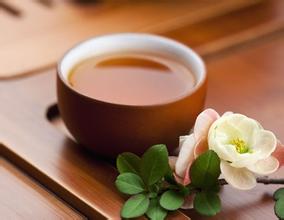Coffee 36 smell bottle-coffee smell bottle 100
Coffee 36 smell bottle-coffee smell bottle 100
Land: land, Aroma group type (Aromatic features of the sample), aroma characteristic (Aromatic features of the sample) this is the smell of freshly excavated soil after heavy rain, like beetroot. Earth atmosphere is everywhere. The English geosmine of "Earth atmosphere" comes from the Greek geo=, taste = osme. The power of the earth, even as small as ants, is like the relationship between the earth and the moon in the universe. The smell of "earth" in coffee of coffee this is the main aroma of coffee. When it is dried in the sun, the coffee fruit absorbs the earth and produces it. Robusta beans are often treated in this way, so this flavor is common. Robusta beans from Madagascar and the Central African Republic often remove sheep skin and reduce the smell of the land. The smell of the land is also often produced by the storage of raw coffee beans. Isabia coffee has three kinds of land flavor, from good to bad, black, red and gray. Harald in Ethiopia, Indonesia, or Arabiya beans in Haiti are often crushed, sprinkled and dried on the ground to highlight the flavor. Note: the oil ester in coffee beans, when dried in the sun, or wet during storage, comes into contact with soil to produce this smell. The coffee fruit is crushed or sprinkled with water, often causing a defective smell. Coffee tasting (Coffee tasting) the best Vietnam, or India Robusta coffee wet land taste, will surprise you. Two kinds of Isabia coffee have amazing aroma and flavor that confuse you: Harald and Sidam. The smell of El Salvador's beans and Papua New Guinea's Siguri coffee is less attractive.
Potato (potato): potato / potato flavor species (Aroma group), sulfur, aroma characteristics (Aromatic features of the sample) this is the potato / potato boiled fragrance, when combined with other flavors, it is still charming and eye-catching. This fragrance comes from methanesulfonaldehyde produced during baking. The smell of "potato" in coffee of coffee this is a common aroma of coffee, but it does not dominate other flavors. If it tastes heavy, the coffee beans are not properly selected. This is the aroma characteristic of coffee. Coffee tasting (Coffee tasting) I often see this charming aroma in meticulous Costa Rica, Colombian soil immediately, or very fragrant, chlorophyll-flavored Honduras coffee. This smell is also common in Zimbabwean coffee in East Africa. But coffee is less important in Central America.
Pea: pea fragrance species green plants, fragrance characteristics, this is fresh pea pods and its attractive pod fragrance. It is a delicate fragrance, unlike the sweet, often metallic canned peas! the garden flavor of this pea and coffee raw bean is 2-isopropyl-3-methoxypyrazine (2-methoxy-3-isopropylpyrazine). It is such a strong smell that it can be smelled in the Olympic swimming pool with only a few drops. The pea aroma of coffee is almost often found in raw beans or lightly roasted coffee, but the deeper it is roasted, the weaker it is. Compared with brewed coffee, it is more significant in ground coffee powder, and seems to be more common in Arabian beans than robusta beans. This important flavor brings vitality and strength to balance the overall aroma of coffee. When I tasted the coffee, I found the smell a little reckless in Robusta, Brazil. It is very prominent in Alabia and Robusta beans in Uganda. Arabian beans are also quite obvious in Guatemala.

Important Notice :
前街咖啡 FrontStreet Coffee has moved to new addredd:
FrontStreet Coffee Address: 315,Donghua East Road,GuangZhou
Tel:020 38364473
- Prev

How to form Coffee Alcohol-the cause of Milk Coffee spot formation
How coffee alcohol is formed-Milk Coffee spots are caused by undissolved solids or deposits that come from two pipes. First, a small amount of coffee fiber is washed down from the surface of coffee powder and suspended in water. Under the action of gravity, tiny coffee fiber particles precipitated to the bottom of the cup. Second, insoluble substances are water-insoluble proteins. These proteins come from coffee and raw beans.
- Next

Introduction of Coffee Kaddura Tree species characteristics, Classification and Flavor description
. Coffee Kaddura Tree species characteristics Classification Flavor description treatment Variety taste introduction Fine Coffee has a rich and beautiful taste. Even if the coffee made of boutique coffee beans is not all fine coffee, it depends on whether it gives full play to the characteristics of coffee beans, whether it has a good taste, if not, it can not be called boutique coffee. As long as it's delicious.
Related
- What brand of black coffee is the most authentic and delicious? what are the characteristics of the flavor of the authentic Rose Summer Black Coffee?
- Introduction to the principle and characteristics of the correct use of mocha pot A detailed course of mocha pot brewing coffee is described in five steps.
- Which is better, decaf or regular coffee? how is decaf made?
- How much is a bag of four cat coffee?
- How about four Cat Coffee or Nestle Coffee? why is it a cheap scam?
- Which is better, Yunnan four Cats Coffee or Nestle Coffee? How about cat coffee? is it a fake scam? why is it so cheap?
- How about Cat Coffee? what grade is a hoax? which instant coffee tastes better, four Cat Coffee, Nestle Coffee or G7 coffee?
- Process flow chart of coffee making-Starbucks coffee making process what coffee tastes good at Starbucks
- The top ten best coffee beans in the world Rose summer coffee or Tanzanian coffee tastes good
- Yunnan four cat coffee is good to drink?_four cat coffee is a big brand? four cat blue mountain coffee is fake?

